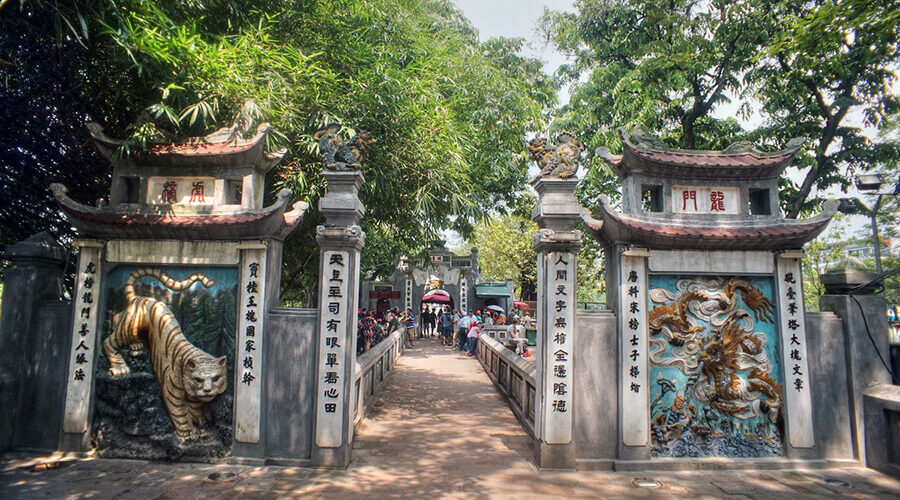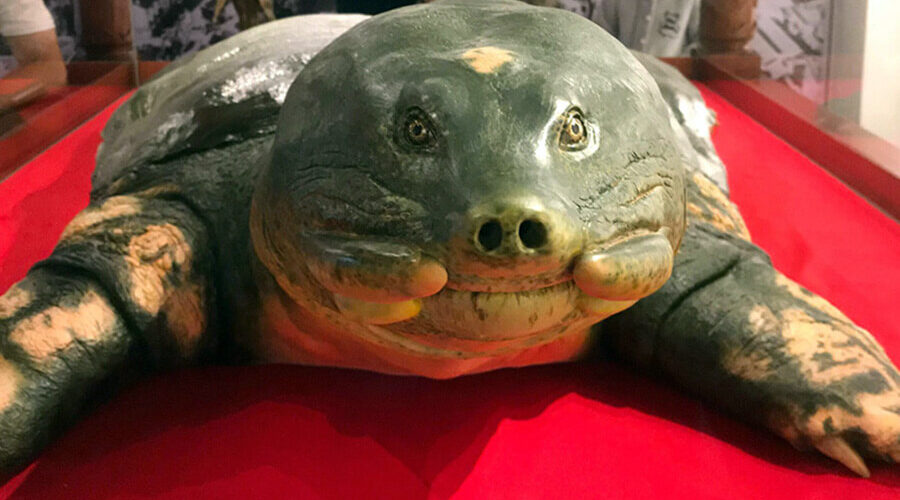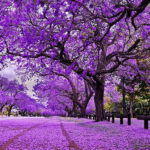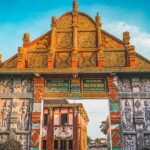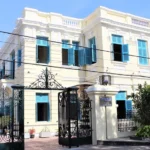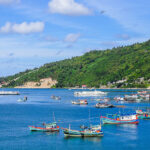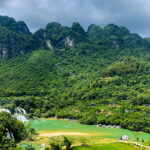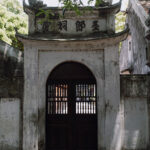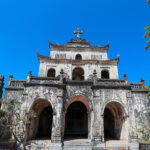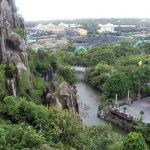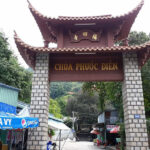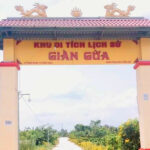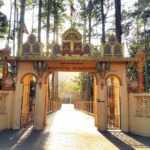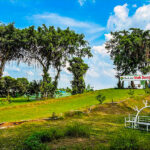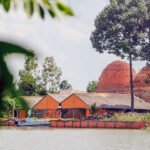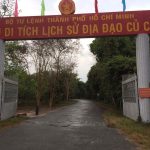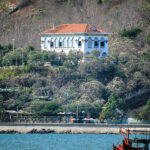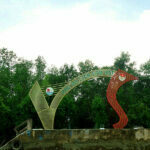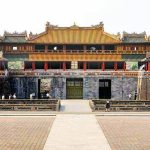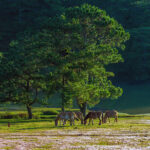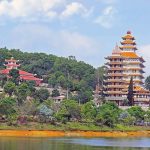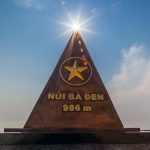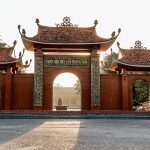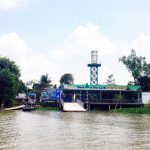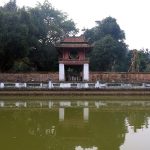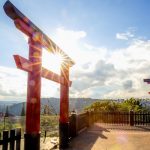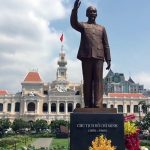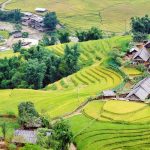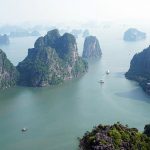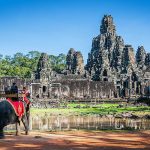Located on Jade Island in the heart of Hoan Kiem Lake, Ngoc Son Temple is famous for its unique architecture and impressive quiet beauty. This article will introduce this relic complex in more depth as well as share some useful experiences to help you have the most complete and perfect trip.
Construction history of Ngoc Son Temple
Ngoc Son Temple was built to worship the national hero, Tran Hung Dao who commanded the Vietnamese armies that repelled two out of three major Mongol invasions in the late 13th century and Wenchang Wang, a Taoist deity in Chinese mythology, known as the God of Culture and Literature. Besides, in the temple there are also Buddhist altars, Council boards… This project was built with an architectural style that clearly shows the ancient Vietnamese concept of the Three Religions, which is an interference of Buddhism, Taoism and Confucianism. Familiar images such as parallel sentences, horizontal panels and decorations all clearly demonstrate for this.

Ngoc Son Temple was built around the beginning of the 19th century, initially to worship the God who helps suppress evil and brings goodness according to the concept of the ancient people. When Emperor Ly Cong Uan moved the capital to Thang Long, he named this temple Ngoc Tuong, then during the Tran dynasty, the temple was renamed again to Ngoc Son. At this time, the temple is a place to worship heroic martyrs who fought and died in the war against the Mongol army. Not long after, the temple collapsed due to unstable foundations.

During the reign of King Vinh Huu of the Le Dynasty, Lord Trinh Giang built Khanh Thuy Palace, and also built two more earthen mountains on the eastern shore of Hoan Kiem Lake, opposite the old location of Ngoc Son Temple. At the end of the Le Dynasty, Khanh Thuy Palace was partially destroyed, so the people of Ta Khanh village worked together to rebuild it, calling it Khanh Thuy Temple.
Some time later, a philanthropist named Tin Trai invested money to build Ngoc Son Pagoda in the old location of Khanh Thuy Palace. Then the temple was transferred to another charity association, renamed Tam Thanh Temple. The Association decided to remove the bell tower, rebuild the main halls and rooms and place the statue of Wenchang Wang, officially named Ngoc Son Temple.

In 1865, a Confucianist named Nguyen Van Sieu overhauled Ngoc Son Temple, built more land around it, built a solid stone embankment, built Thap But (The Pen Tower), Dai Nghien (ink-slab), built Tran Ba communal house in the south and the connecting The Huc bridge go from the shore to the temple.
Unique architecture of Ngoc Son Temple
Through many times of construction, repair, name change and major restoration along with many historical upheavals, Ngoc Son Temple still retains its ancient architecture.

From the outside gate, visitors will see a wall with a dragon board and a tiger board with 2 parallel sentences talking about studying and taking exams in the past.

Passing The Huc bridge, visitors will enter Dac Nguyet Lau (moon contemplation pavilion). The floor is designed with a 2-storey dome with reliefs at 4 corners. On Dac Nguyet Lau, there are two embossed paintings.

Ngoc Son Temple divides from outside to inside, including worship hall, middle hall and harem. The worship hall is the first place of ceremony. In the middle of the altar is a large incense burner, on both sides of the incense burner are a pair of parrots, originating from the anecdote of the parrot helping Lam Son insurgents (led by Emperor Le Loi) find ripe fruit to use as food when surrounded by the Chinese Ming Dynasty army in the forest.

The middle hall is a place to worship Wenchang Wang, Guan Yu and Lu Dongbin, gods worshiped by writers, mandarins, and scholars according to Confucian concepts. The harem is built higher than the altar and the middle hall, and is a place to worship Tran Hung Dao, the Vietnamese hero. On both sides of the statue of Tran Hung Dao are statues of Tran Lieu, his father and the statue of the Earth God.
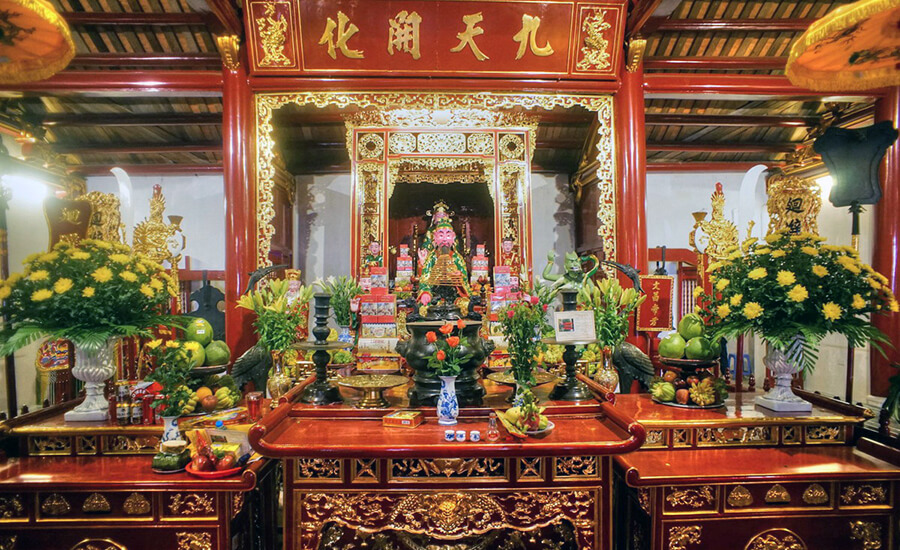
On both sides of the main temple area there are two wings, of which the right room is where two specimens of Hoan Kiem turtle are displayed, a particularly rare creature associated with mysterious anecdotes about the story of Emperor Le Loi returning the sword, the Heavenly’s Will, to the Golden Turtle God.

The specimen on the outside is of an “old” turtle who died in 1967. This “old” turtle when he first died weighed 250 kg, was 2.1 meters long, and 1.2 meters wide.

The specimen inside of the “old” turtle that died in 2016, is 2.08 meters long, 1.08 meters wide, and weighs 169 kg. Treated by the plastination method, the specimen still retains its natural appearance like when the turtle was still alive.

In the temple, there is a rich system of ancient artifacts with many stone steles, bells, altars, couplets… dating back to the Nguyen Dynasty.
Surrounded by special architectural works
Ngoc Son Temple is surrounded by 3 special architectural works including Thap But (The Pen Tower), Dai Nghien (ink-slab), and The Huc Bridge.
But Tower and Dai Nghien
The But Tower is located right at the temple gate, built of stone, 9m high, built on a rocky mound symbolizing a mountain. On the tower are engraved three words “Ta Thanh Thien”, which means “Write to the Blue Sky”. This tower is now more than 150 years old.

At the foot of the But Tower is the blue stone Dai Nghien carried on the backs of three Jin Chans (the Money Toad). On the stone is engraved a poem by Confucian scholar Nguyen Van Sieu. At the moment when the sun is right overhead, the image of the But Tower silhouetted against the heart of Dai Nghien creates a moment of unreal beauty that not everyone has the opportunity to admire.
The Huc Bridge
The Huc Bridge impresses with its vermilion red color, the bridge is made of wood, shaped like a shrimp. The Huc means “where the early morning sun rays converge”. This bridge is also the only path leading from the shore of Hoan Kiem Lake to Ngoc Son temple. The Huc means “where the early morning sun rays converge”.
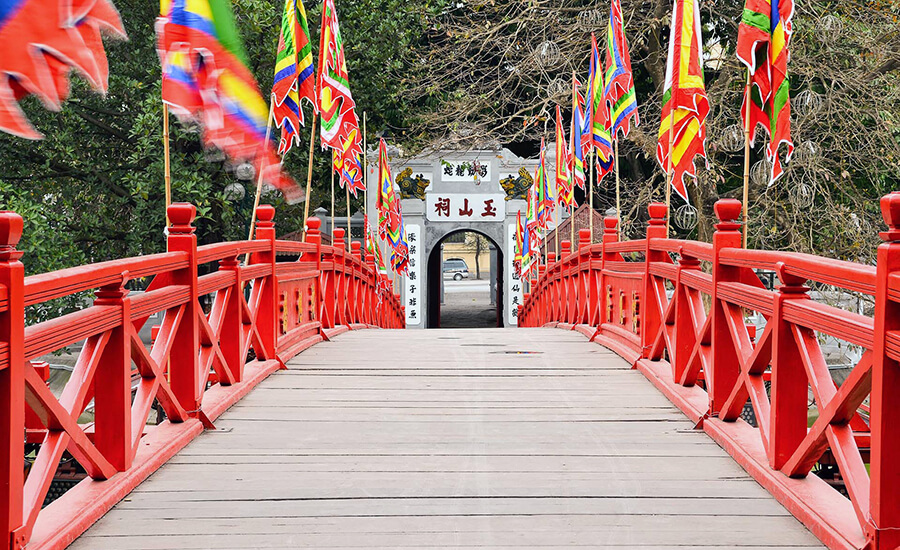
With that special design, you can easily take “lifetime” photos when checking in at the bridge. Don’t forget to take the time to fully admire the sparkling beauty of The Huc Bridge at night, it certainly won’t disappoint you.
Tran Ba pavilion
The name of the project means pavilion against waves – implying a pillar standing firmly amid the unhealthy waves in contemporary culture.

The square communal house has eight roofs, a two-story roof with 8 supporting columns, four outer columns made of stone, four inner columns made of wood. The outside columns have parallel sentences in Chinese characters.
From Tran Ba pavilion, you can cover a wide angle with many beautiful scenes of Hoan Kiem Lake such as Turtle Tower and the Post Office on the lake shore.

Ngoc Son Temple is quiet in the middle of a noisy city, and is the most famous ancient architectural work in the capital. Therefore, Vietdreamtravel travel guide hopes you will soon have the opportunity to come here to directly explore and experience.
Source: collected by An
Follow us for the best deal with Vietnam package tours and visa services!





